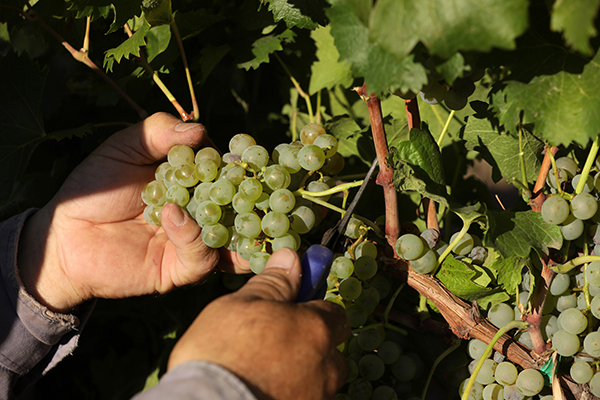Agritourism is a combination of agricultural and tourism activities, generating additional revenue and dissemination of their brand to farmers, and offering knowledge and experiences from the farm activities to the visitors. AgriBrasilis invited 4 representatives of farms engaged in agritourism to share their experiences.
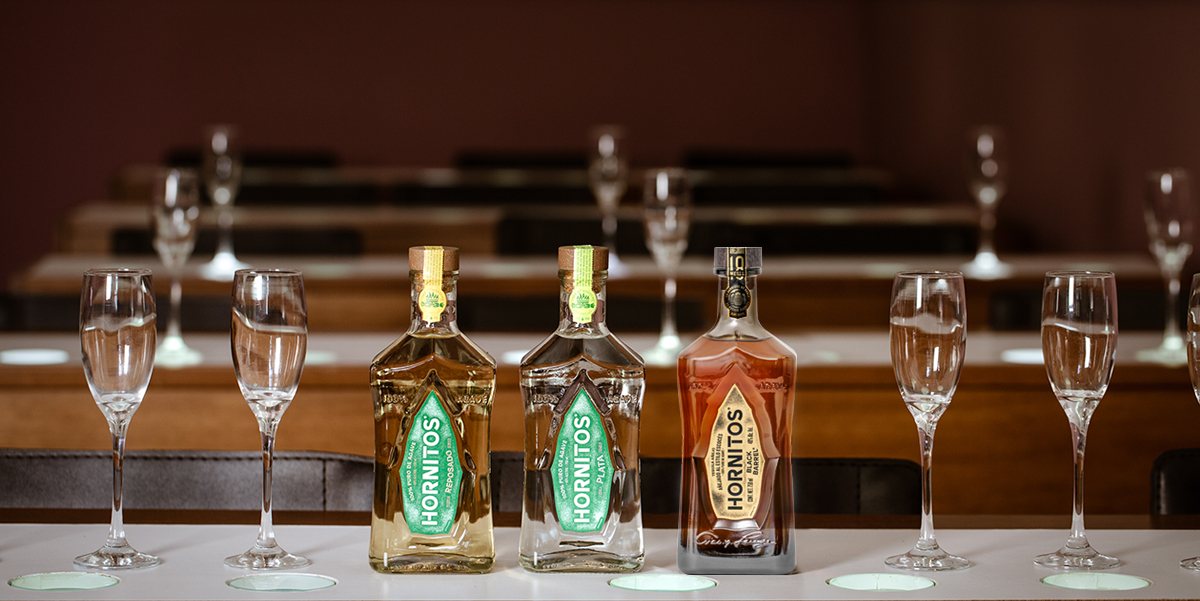
Casa Sauza aims to show the greatness of the tequila industry, founded in 1873, it is located in the city of Tequila, Jalisco, Mexico, birthplace to this drink that is a national symbol and receives the name of the city
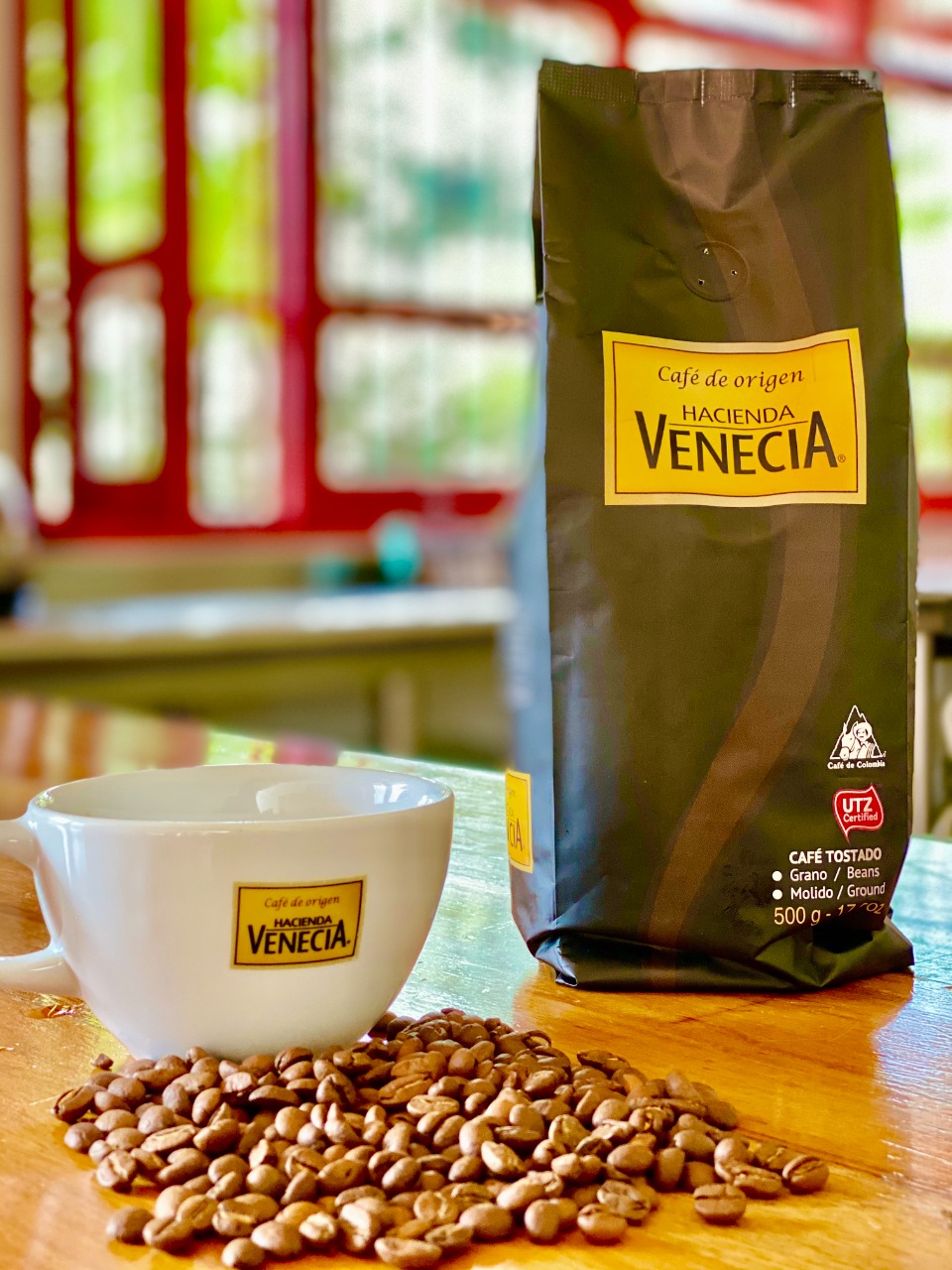
Venecia Farm in Colombia has more than 100 years of tradition in coffee production, and in the last decades has invested in tourism, receiving visitors mainly from Europe and the United States
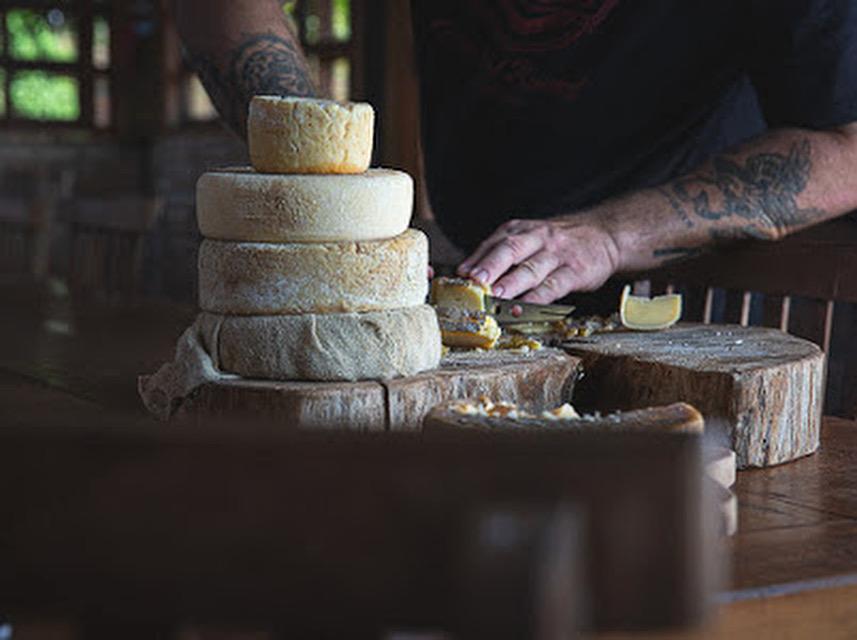
Capim Canastra Ranch is one of the main producers of Canastra cheese in Brazil. Canastra cheese is a matured cheese, with yellowish crust and soft interior

Founded in 1879 in Argentina, Bodega Lagarde was acquired in 1969 by Pescarmona Family, the printed stamp that would mark its identity as high-quality wine producers
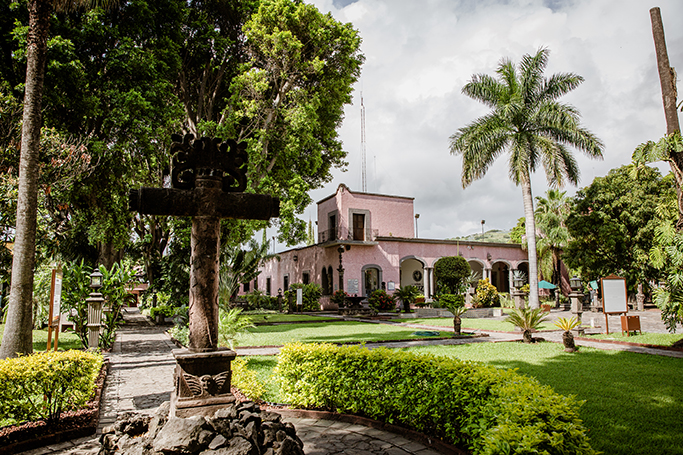
Sauza’s Family Casona, 1836 building located in Tequila, Mexico
Tequila Casa Sauza in Mexico
Tequila is a distilled beverage known for its irreverence. But behind it’s fame there is a lot of hard work to maintain quality, such as origin specification and the time it takes for growing tequila’s main ingredient, agave, which is from 7 to 12 years.
Casa Sauza aims to show the greatness of the tequila industry, founded in 1873, it is located in the city of Tequila, Jalisco, birthplace to this drink that is a national symbol and receives the name of the city. Tequila produced in their farm was once the most sold in the world. AgriBrasilis invited Victor Manuel Martinez Quezada, manager of Casa Sauza’s Visitors Center to share the experiences offered at the place.
“Our commitment to our visitors is to provide experiences that reveal the legacy, the quality of our products and the emphasis in social commitment”
The place attracts 67 thousand visitors annually, only 8% of them foreigners, but Sauza’s tequila can be found in the five continents.
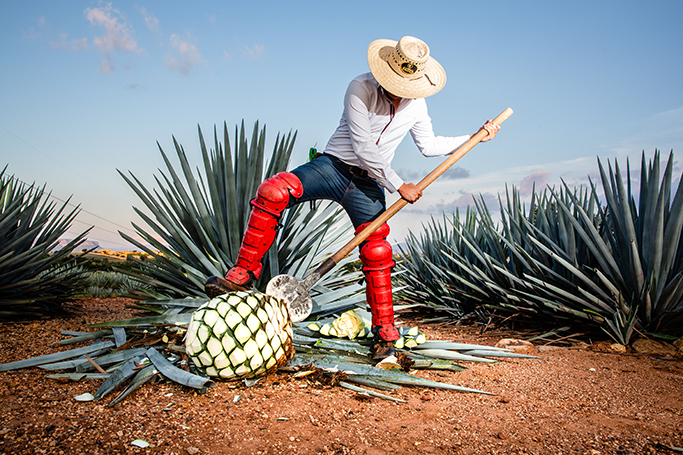
Jimador in “Jardin botânico” , Sauza’s farm, demonstrating the process of jima of agave, raw material of tequila
Upon arriving at Sauza Farm, the visitor is carried in carts to “Jardín Botánico” agave farm, to discover a more rural part of the industry. Then the agave is harvested and it is explained the meaning of Jimador¹ and Jima¹. Afterwards, they set off to the oldest tequila industry in the city of Tequila, La Perseverancia, where some tastings are made directly from the extraction and distillation, to end in the unique skydeck container. This last attraction allows the visitor to enter the packaging area in a safe and original way. The tour ends with experiences in the Sauza Family Casona, the farm where fountains and gardens make people feel in 1836 again. There are located the restaurant, the tasting room, gardens that hold events and a souvenir store called “Los Memórias de Salza”.
Due to the pandemic, there were some changes in the rout to meet health protocols. Now it isn’t possible to visit the tequila factories, but visitors still can get to know the jima process and agave fields, Sauza Family’s Casona and carry out tastings, in addition to seeing the remarkable landscape of agaves and immersing themselves into this story that has over 145 years of tradition. Agave has been part of Mexico’s history since the beginning, either as a currency exchange or medicinally.
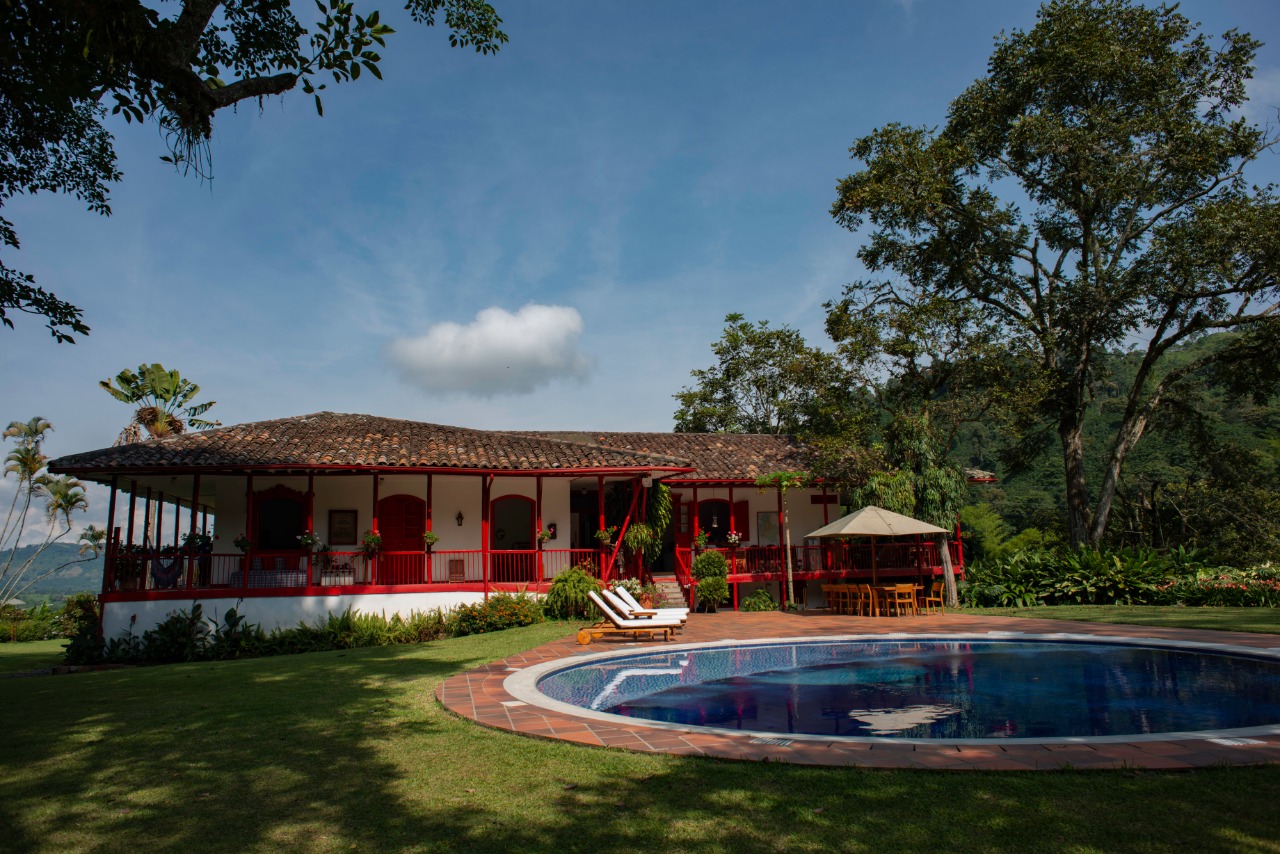
Venecia Farm big house, 100 years old building made of taipa
Colombian coffee in Venecia Farm
Colombian coffee is appreciated all over the world, and although several terroirs² and arabica coffee generate different flavors and aromas, in general, the result is a smooth, well balanced coffee, medium and silky body, easy to drink.
Venecia Farm has more than 100 years of tradition in coffee production, and in the last decades has invested in tourism, receiving visitors mainly from Europe and the United States. Before the pandemic, they had around 7,000 visitors per year, among guests and people who would come from abroad to experience the coffee tour.
They offer various tours and activities since the arrival, there is the option of resting in a hammock, going to the swimming pool or enjoy activities such as coffee tours, artisanal chocolate workshops, rum tasting, bird watching and hiking.
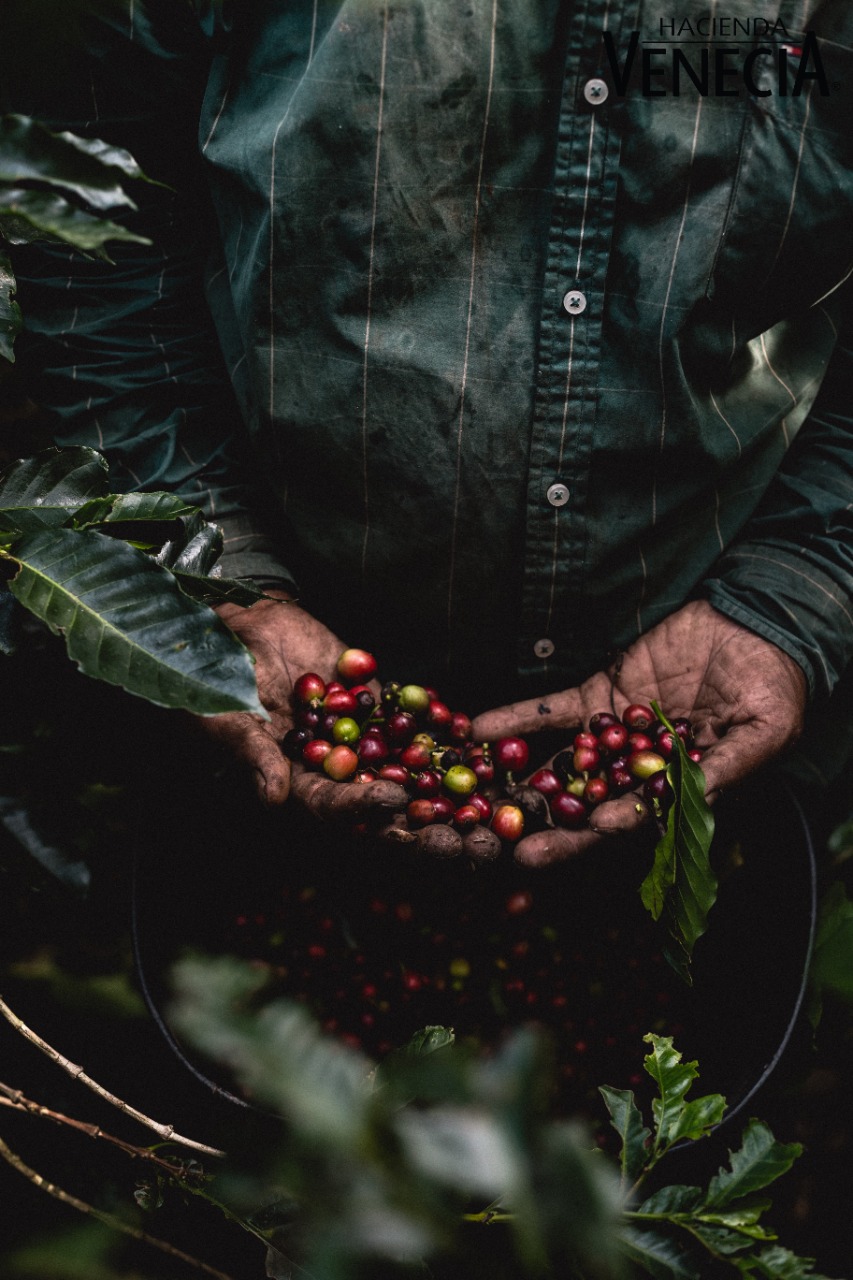
Coffee is a driving force in local economy and livelihood of several Colombian families
Natalia Londoño, Market and Public Relations Director for the farm says the visits are motivated by the expectation of knowing a coffee farm with so many years of tradition. Part of this tradition can be seen in the visit to the “big house”, a taipa building [made of mud and wood] of over 100 year old.
The tour begins with a small informative chat, after that it is offered a taste of the coffee made in the place. Then the visitors go to the coffee plantation and from there follow to the mill, in the end, there is a demonstration of roasting.
What makes the farm special is the work of it’s employees and its localization. The department of Caldas has 25 coffee municipalities and it is known for the good quality of coffee produced in the region. Due to its proximity to the volcano Nevado del Ruiz, the soil is more fertile and coffee reaches its maximum expression.
“In Caldas, coffee is the driving force in economy, it is the livelihood of 32.459 families that depend directly on coffee, it is also a source of roots and traditions, in the region coffee is produced with sustainability and origin certificates, promoting sustainable production conditions and showing the world the variety and richness of coffee”.
The types of coffee that are produced in the region are washed coffee, with greater volume, also honey and natural processes, which are post-harvest processes where fermentation and oxidation of the beans are combined to obtain different cup profiles.
On account of the pandemic, the visits suffered a few changes, according to Natalia “We have a few basic rules among our guests and employees, such as: physical distance, mandatory use of masks and washing hands constantly. Truth is that we realize visitors paying more attention and being respectful to the situation.”
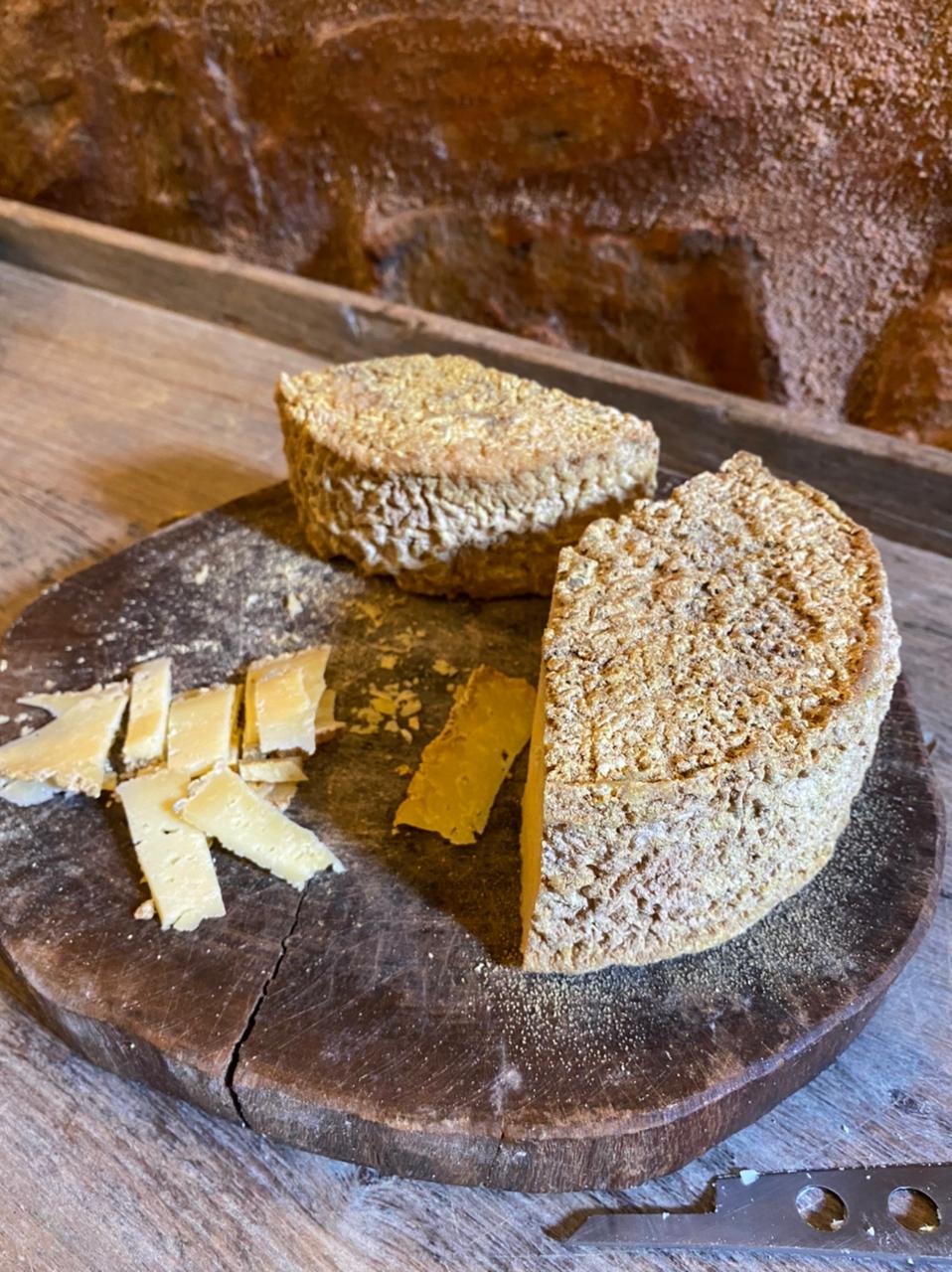
Matured cheese from the cave
Cheese from Capim Canastra Ranch in Brazil
Canastra cheese is a matured cheese, with yellowish crust and soft interior. Much appreciated nationally, it was recognized by IPHAN³ as Brazilian intangible cultural heritage in 2008. So one can imagine why it’s production and tasting attracts the attention of tourists. Only seven municipalities of the Southwest of Minas Gerais State can sell the cheese with Canastra’s origin indication, and they must follow a series of specifications during production.
Guilherme Ferreira, Veterinarian, is the creator of Capim Canastra Ranch and tells us about the visit to the Minas Gerais cheese factory.
The ranch is one of the main producers of Canastra cheese in Brazil. In 2015, the cheese received a silver medal in an important French championship, being the first national cheese to receive an international title.
The tour consists of visits to the cheese manufactory, production and maturation rooms, kitchen and then the maturation underground cellar, where tasting takes place. Usually, the latter is the most striking part of the visit, because it is a unique structure in the region and allows to the visitors to feel closer to the production and know the challenges of the artisanal production of cheese.
“The differential of our cheese is quality and tradition. Quality needs to be strict due to the raw milk, that accepts no “regular”, it needs to be 100%. Also the differential of the region that has a particular microbiota, altitude, water and soil quality.”
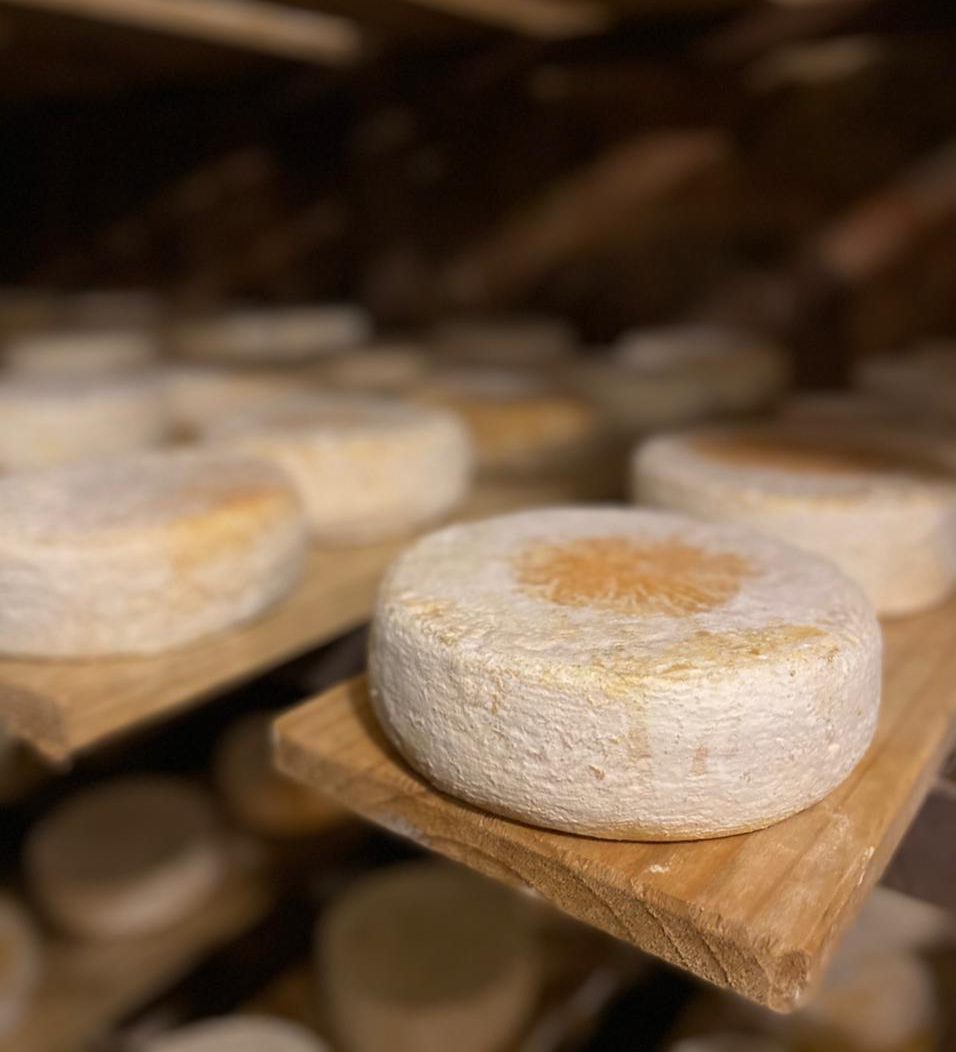
Cheese in the maturation cavern, a differential of the farm, once it has French and Italian references and is unique in the region
For this reason, the ranch receives visitors from all over the country, mainly São Paulo. There are still few foreign visitors due to the distance of airports and the recent discovery of the place by tourists. The average of visits varies, on holidays they are more than 100 per day.
Pandemic has affected visits, causing tourism to be little encouraged. However, the farm has adapted itself, “in the beginning, we diminished the production due to the pandemic, we tried to make up new cheeses to meet e-commerce demands, we did long maturation cheeses to increase stock in the cave. In the aftermath, e-commerce sales increased and we had to resume production. Today we produce the same amount as before the pandemic. We are more careful during visits, wearing masks, using gel alcohol and accepting smaller groups”.
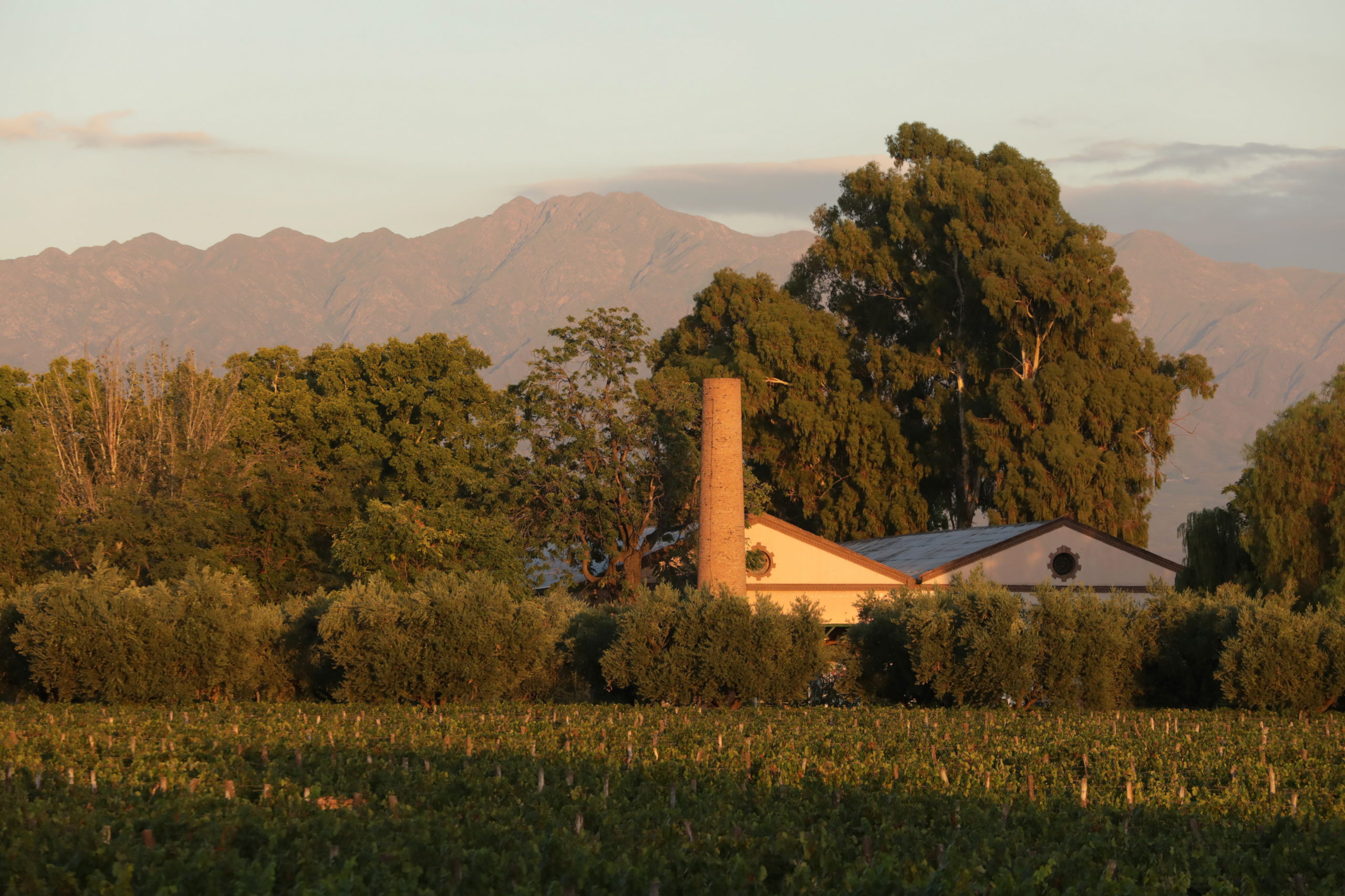
Lagarde winery is located in the main wine producer region, the high region of Mendoza River
Lagarde Winery in Argentina
Wines speak of elegance, but above all of flavor, especially when combined with cuisine. The Province of Mendoza, in Argentina, originates dark colored Malbec wines with moderate acidity and ripe and soft tannins.
Founded in 1879, Bodega Lagarde was acquired in 1969 by Pescarmona Family, the printed stamp that would mark its identity as high-quality wine producers. Innovation has always been a mainstay, so they were one of the first producers of non-traditional strains such as Viognier e Moscato Bianco in Latin America, aiming to obtain a wine with the winery’s own style. Sofia Pescarmona, owner and CEO,tells the experiences offered in the winery.
The farm offers several options to visitors during summer months. The goal is that people who visit the winery get to know their wines, but also that they live a typical Mendoza experience, touring the Malbec vineyards, learning more about wine making and enjoying top-notch cuisine. On hot days, visitors can have their meals on the patio of the gastronomic space, under an 80 years old mulberry tree.

Barrel room, the grapes are carefully grown according to the needs of each variety to achieve their best expression
“Guided tours and tastings are available during the week. There is also an ‘auto guided’ tasting, in which visitors sit in front of the vineyards and taste wine by glass or by bottle, or yet a selection made by the sommelier, with the possibility to customize it according to the client’s taste.”
“The most grown grape is Malbec, because it is the wine we produce the most, the most sold in Argentina and also the one we export the most” says Sofía.
Before the pandemic, the majority of visitors were from Brazil and the US. Today, the majority comes from Buenos Aires. There are also plenty of local residents that take the chance to know the wineries near their homes.

Malbec grapes harvest, the most popular in Argentina
During the visit, people will walk through the vineyards around the winery and learn about winemaking. This includes the tank and the barrel rooms, champagne buckets where sparkling wines are made in the traditional way. The tour ends in the Wine shop, where tasting is carried out. There are three options that allow to discover the different lines of the winery: Clássicos de Lagarde; Cata de Guarda e Experiência Gran Guarda.
“Since we reopened to visitors, the winery follows government protocols about Covid-19”.
In the next few months, the farm expects to keep on working with local and national tourists, but they believe that in future they will receive tourists from many countries.
Notes:
1. Jimador is an experienced farmer who identifies the ripe agave and jima is it’s harvest.
2. Terroir is a term usually used in vineyards, meaning the combination of climate, altitude, height and soil, now used to coffee plantations too.
3. IPHAN is the Brazilian National Institute of Historical and Artistic Heritage

